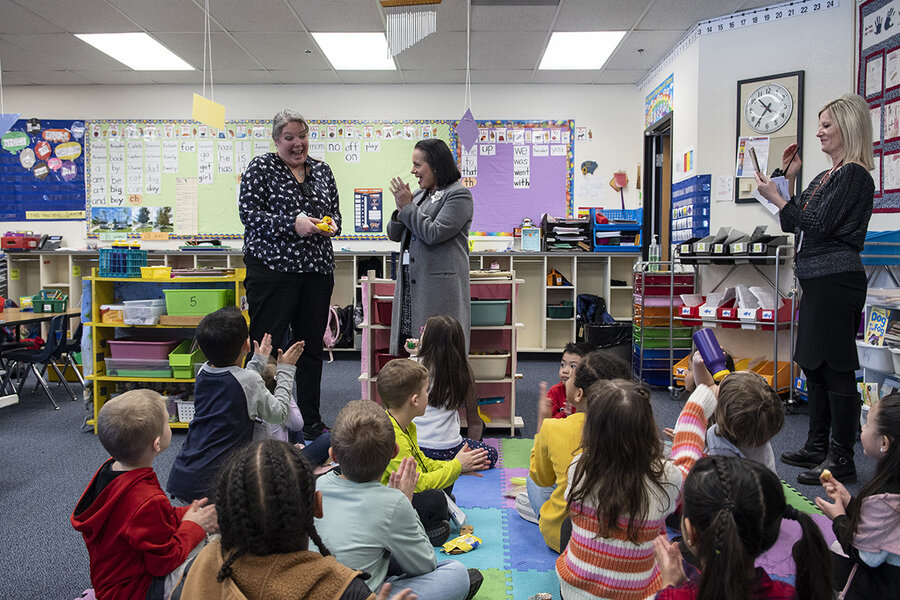In recent years, there has been a noticeable trend of families leaving public schools and opting for alternative education options. This shift in educational choices has significant implications for the traditional education system and raises questions about the future of public education. In this article, we will explore the reasons behind this phenomenon, its impact on the education system, and the potential changes that lie ahead.
Reasons for Families Leaving Public Schools
The decision of families to leave public schools stems from various factors. Firstly, concerns about the quality of education provided in public schools have been a driving force. Families want their children to receive the best possible education and may feel that public schools are not meeting their expectations. Additionally, issues such as safety concerns, overcrowded classrooms, and limited resources can contribute to the decision to seek alternative options.
Impact on Education System
The departure of families from public schools has a significant impact on the education system as a whole. With fewer students attending public schools, there is a decrease in funding and resources allocated to these institutions. This can lead to a strain on the remaining public schools, affecting the quality of education and available opportunities for students. It also raises concerns about educational equity and access for those who cannot afford alternative education options.
Rise in Homeschooling and Alternative Education
One noticeable consequence of families leaving public schools is the rise in homeschooling and alternative education approaches. Many families are choosing to take a more active role in their children’s education by homeschooling them. This allows for personalized learning experiences tailored to each child’s needs and interests. Additionally, alternative education options such as charter schools, online learning platforms, and specialized academies have gained popularity as alternatives to traditional public schools.
Challenges Faced by Public Schools
The exodus of families from public schools highlights the challenges faced by these institutions. Public schools must address issues such as declining enrollment, low academic performance, and limited resources. They must also adapt to changing educational landscapes, incorporating technology, and providing individualized learning experiences to meet the demands of modern students and parents.
Technology and Education
One significant aspect that shapes the changing landscape of education is technology. Families leaving public schools are often attracted to alternative options that leverage technology to enhance the learning process. Online platforms, educational apps, and interactive tools offer flexibility, personalized learning, and access to a vast range of educational resources. Public schools must embrace technology to stay relevant and meet the evolving needs of students and families.
Parental Involvement in Education
Another key factor in families opting out of public schools is the desire for greater parental involvement in their children’s education. Many parents believe that they can provide a more nurturing and tailored learning environment by actively participating in their child’s educational journey. This involvement can range from curriculum choices and teaching methods to extracurricular activities and field trips.
Socialization and Peer Interaction
One concern often raised about families leaving public schools is the potential impact on socialization and peer interaction. Public schools have traditionally been a place where children can interact with peers from diverse backgrounds, fostering social skills and cultural understanding. Alternative education options need to address this aspect by providing opportunities for socialization through community activities, co-ops, and specialized programs.
Academic Performance and Individualized Learning
Leaving public schools allows families to prioritize individualized learning and focus on their child’s academic performance. In many cases, alternative education options offer smaller class sizes, allowing for more personalized attention and tailored instruction. This individualized approach can lead to improved academic performance, as students can learn at their own pace and explore subjects of interest more deeply.
Funding and Resource Allocation
The departure of families from public schools also raises questions about funding and resource allocation. As enrollment declines, public schools may face budget cuts, leading to a decrease in educational programs, extracurricular activities, and support services. It is crucial for policymakers and educational stakeholders to address these challenges and ensure that public schools receive adequate funding to maintain a high standard of education.
Teacher-Student Ratio and Personalized Attention
One advantage of alternative education options is the ability to offer a lower teacher-student ratio, enabling more personalized attention for each student. This can enhance the learning experience, as teachers can focus on the specific needs and strengths of individual students. In contrast, public schools often struggle with large class sizes, making it challenging for teachers to provide the same level of personalized attention.
Curriculum and Educational Choices
Leaving public schools allows families to have more control over their child’s curriculum and educational choices. Alternative education options often offer diverse curricula, specialized programs, and flexibility in course selection. This enables families to tailor their child’s education to align with their values, interests, and future aspirations.
Educational Equity and Access
While families leaving public schools have the freedom to choose alternative education options, concerns about educational equity and access arise. Not all families can afford private schools or homeschooling, leading to potential disparities in educational opportunities. It is crucial for policymakers to address these inequalities and ensure that all students have access to quality education, regardless of their socioeconomic background.
Future of Public Education
The departure of families from public schools raises questions about the future of public education. To remain relevant, public schools must adapt to changing educational landscapes, incorporate technology, provide personalized learning experiences, and address the concerns and expectations of families. Collaboration between public and alternative education sectors can lead to innovative solutions that benefit all students.
Conclusion
The increasing number of families leaving public schools is reshaping the education landscape. Concerns about quality, safety, resources, and individualized learning have prompted many families to explore alternative education options. This shift presents both challenges and opportunities for the education system. Policymakers, educators, and parents must work together to ensure that all students have access to quality education and that public schools continue to evolve and meet the changing needs of students and families.


